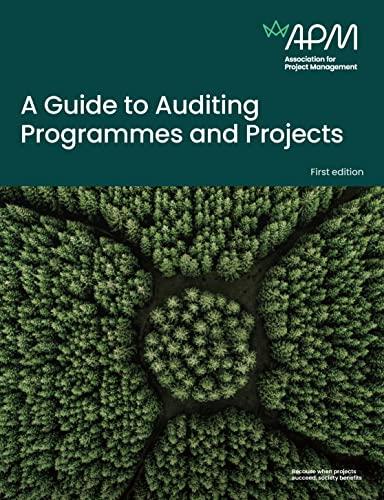Question
MA Company uses a standard cost system in which manufacturing overhead costs are applied to units of the company's single product on the basis of
MA Company uses a standard cost system in which manufacturing overhead costs are applied to units of the company's single product on the basis of direct laborhours (DLHs). The cost information for the product is as follows:
Standard Cost per unit of product:
Direct Materials, 2 metres at $4 per metre ....................................... $ 8
Direct Labor, 2 DLHs at $10 per DLH .................................................. $20
Variable Manufacturing Overhead, 2 DLHs at $2 per DLH ............ $ 4
Fixed ManufacturingOverhead, 2 DLHs at $4.5 per DLH ................ $ 9
Standard cost per unit ......................................................................... $41
The following data pertain to last year's activities:
At the start of the year, the company had forecast the manufacture of 15,000 units and the sale of 14,000 units at a selling price of $50.
During the year, the company manufactured 18,000 units of product. Of the 18,000 units of product manufactured, 16,000 units were sold at a selling price $48.
A total of 40,000 meters of direct materials was purchased during the year at a cost of $3 per meter. 38,000 meters were used to manufacture the 18,000 units
The company worked 35,000 direct labor-hours during the year at a cost of $8 per hour
The denominator activity level was 30,000 direct labor-hours.
Budgeted fixed manufacturing overhead costs were $135,000 while actual fixed manufacturing overhead costs were $150,000.
Actual variable manufacturing overhead costs were $74,000.
1. The revenue price variance is:
A. $32,000 (U) B. $0 C. $36,000 (U) D. $28,000 (U) E. None of the above
2. The direct materials quantity variance is:
A. $8,000 (U) B. $8,000 (F) C. $40,000 (U) D. $40,000(F) E. None of the above
3. The labor rate variance is:
A. $10,000 (U) B. $10,000 (F) C. $70,000 (U) D. $70,000 (F) E. None of the above
4. The variable manufacturing overhead spending variance is:
A. $2,000 (U) B. $2,000 (F) C. $4,000 (U) D. $4,000 (F) E. None of the above
5. The fixed overhead volume variance is:
A. $27,000 (U) B. $27,000 (F) C. $15,000 (U) D. $15,000 (F) E. None of the above
6.The allocation of manufacturing overhead is:
A. $10,000 under-allocated B. $10,000 over-allocated C. $29,000 under-allocated D. $19,000 over-allocated E. None of the above
Please write the calculation process. please
Step by Step Solution
There are 3 Steps involved in it
Step: 1

Get Instant Access to Expert-Tailored Solutions
See step-by-step solutions with expert insights and AI powered tools for academic success
Step: 2

Step: 3

Ace Your Homework with AI
Get the answers you need in no time with our AI-driven, step-by-step assistance
Get Started


